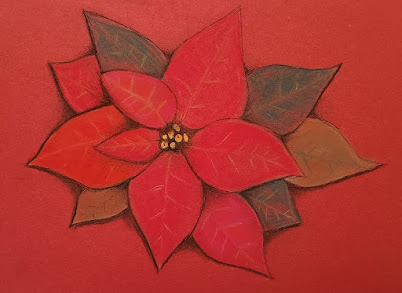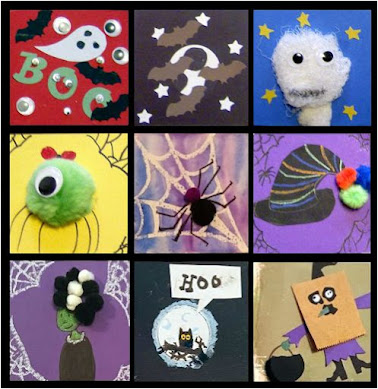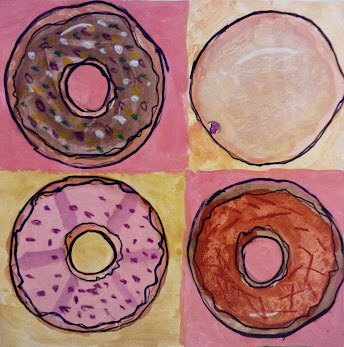 |
| Artist age 8 |
Have you ever noticed that, besides yummy morsels of sweetness, donuts are actually delightful little pieces of art?
Fancy or simple, iced or filled, it seems as though each donut is so carefully crafted it seems almost a shame to eat it!
But yet, who can resist? It's a real conundrum.
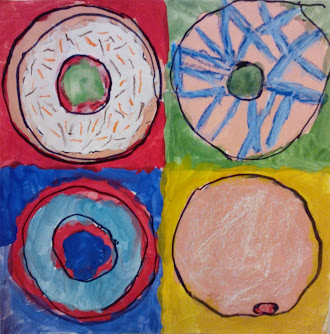 |
| Artist age 5 |
To celebrate National Donut Day (June 2) we created donut art! (We probably would have done it anyway.)
Our young artists had lots of exciting ideas about how to design and decorate their own donuts!
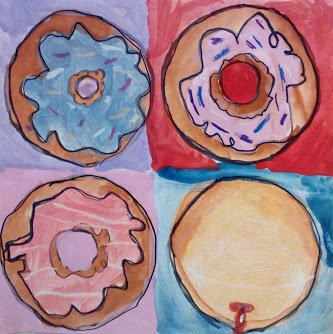 |
| Artist age 6 |
First our artists divided a 12" by 12" piece of sulfite paper into four squares using a ruler. They then traced a cardboard circle template, lightly with a pencil, in each square. A hole was added in the center of each one - unless it was destined to be a jelly filled donut, of course.
Now it was time to plan how each donut would be designed.
Any icing slathered on a donut was outlined, and then all pencil lines were traced with black Sharpies (to be more easily seen while painting).We used cake temperas, which we mixed with white liquid temperas on a palette for pastel tints.
Donuts were first painted with soft tans and browns around the
outside and inside edges of the donut shape. The icing colors were added next, using light tints here and there to create a little shine.
After the paint was dry (cake temperas dry fast!) sprinkles and textures were then added using oil pastels, paint, colored Sharpies, and colored pencils.
A background color was then added to each square, and the donuts were outlined once again for a strong visual effect. Sweeet!!
This artist used watercolor colored pencils to create these beauties:
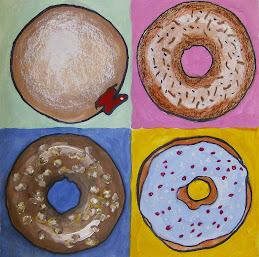 |
My demo
|
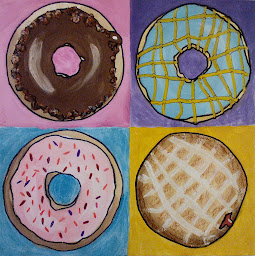 |
| My sample |
You can learn more about making your own donut art by visiting our previous post, Delicious Donuts!
